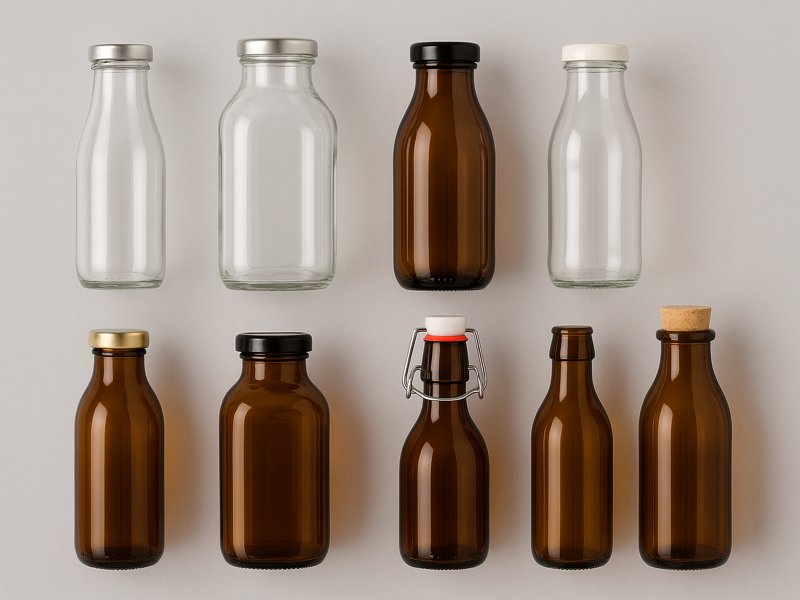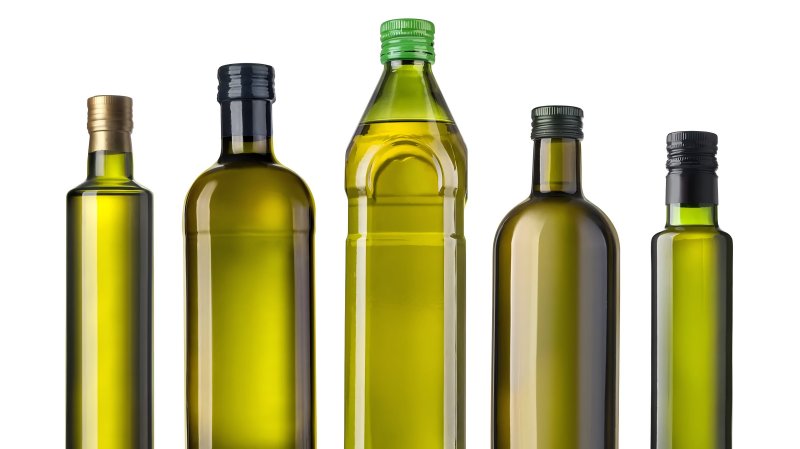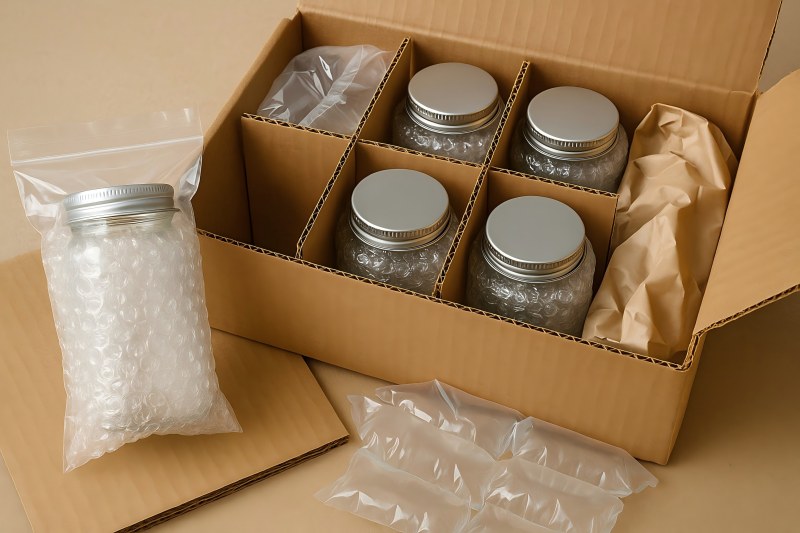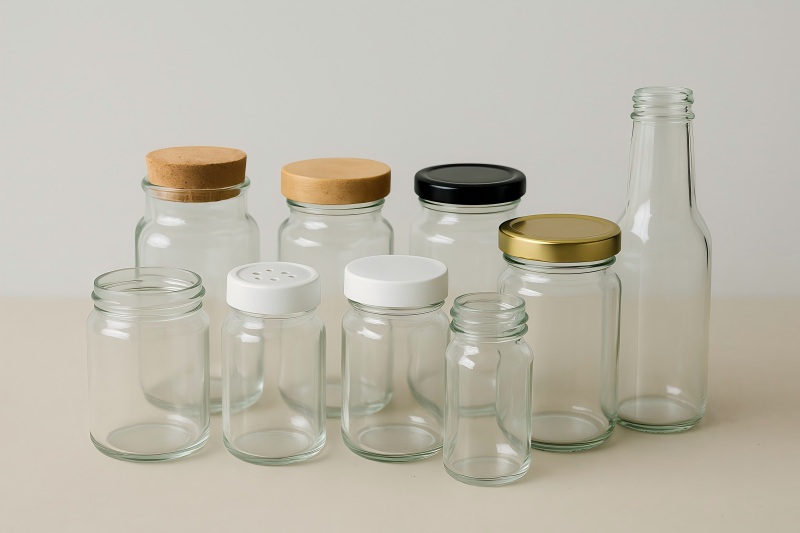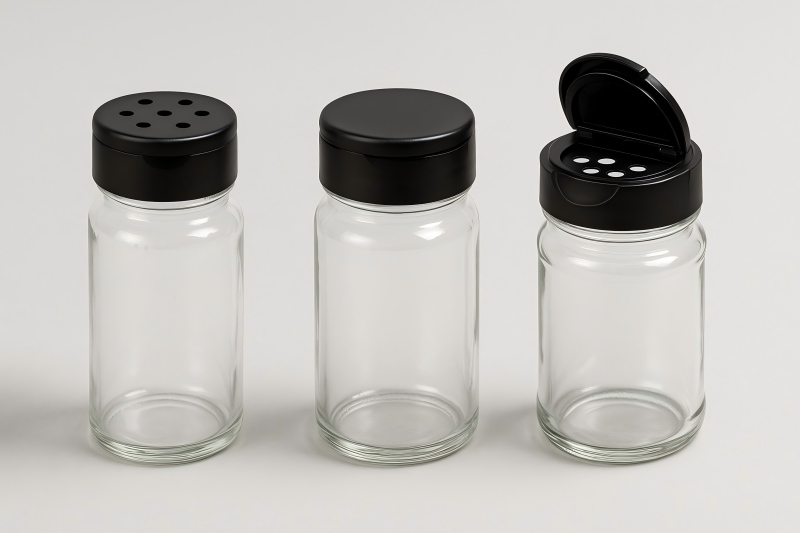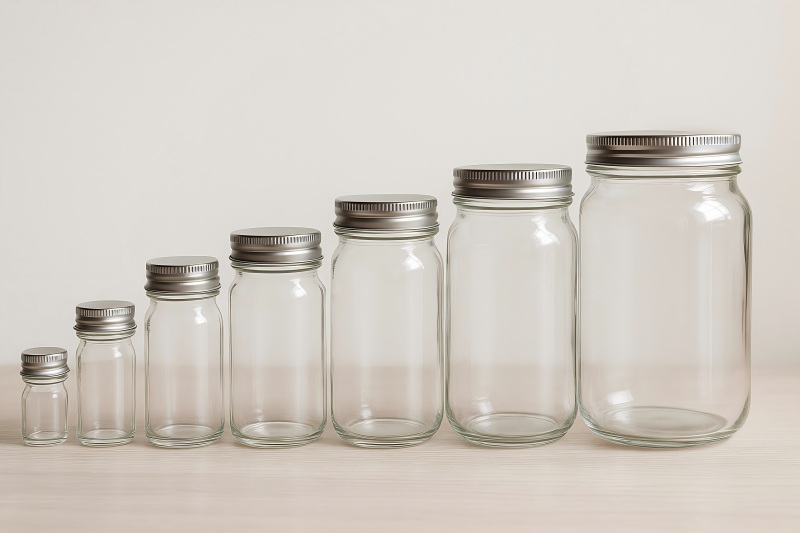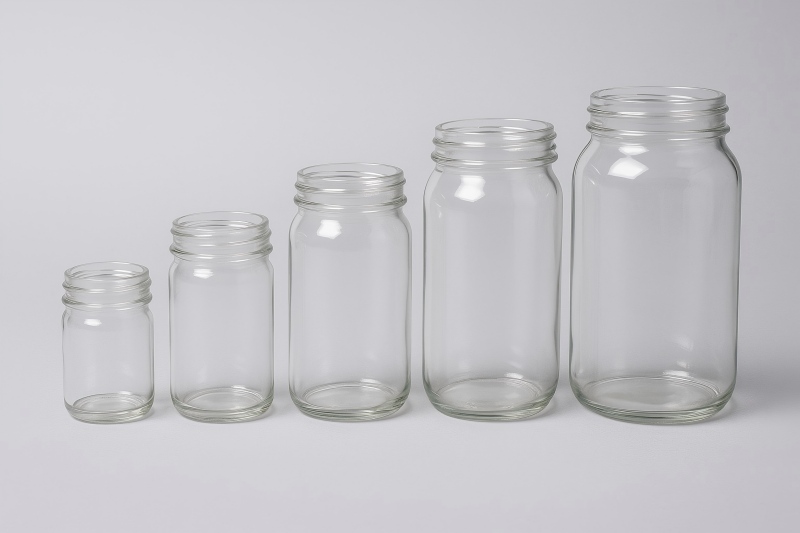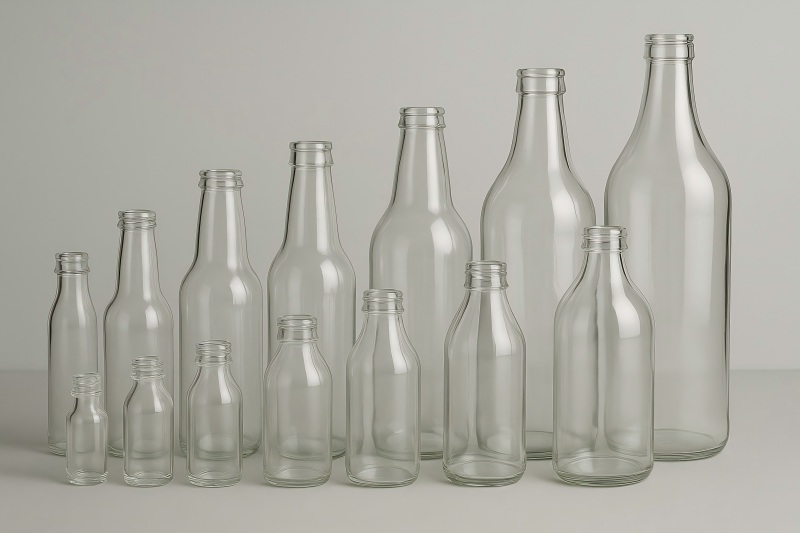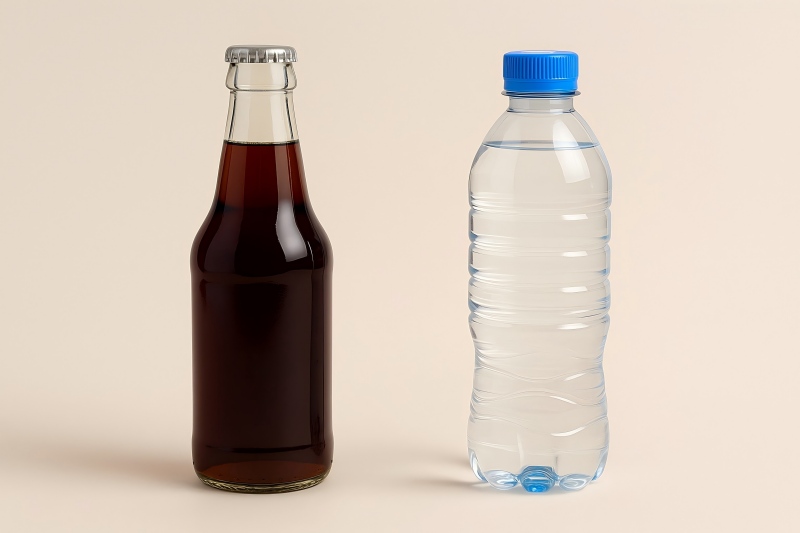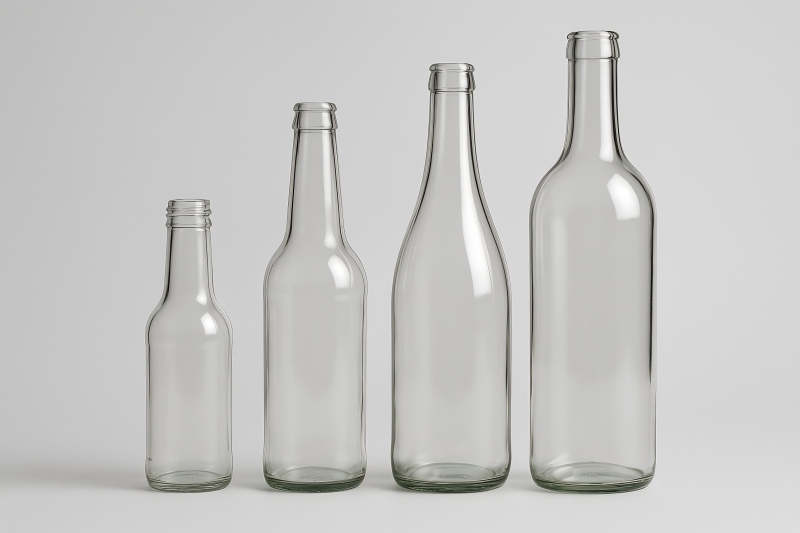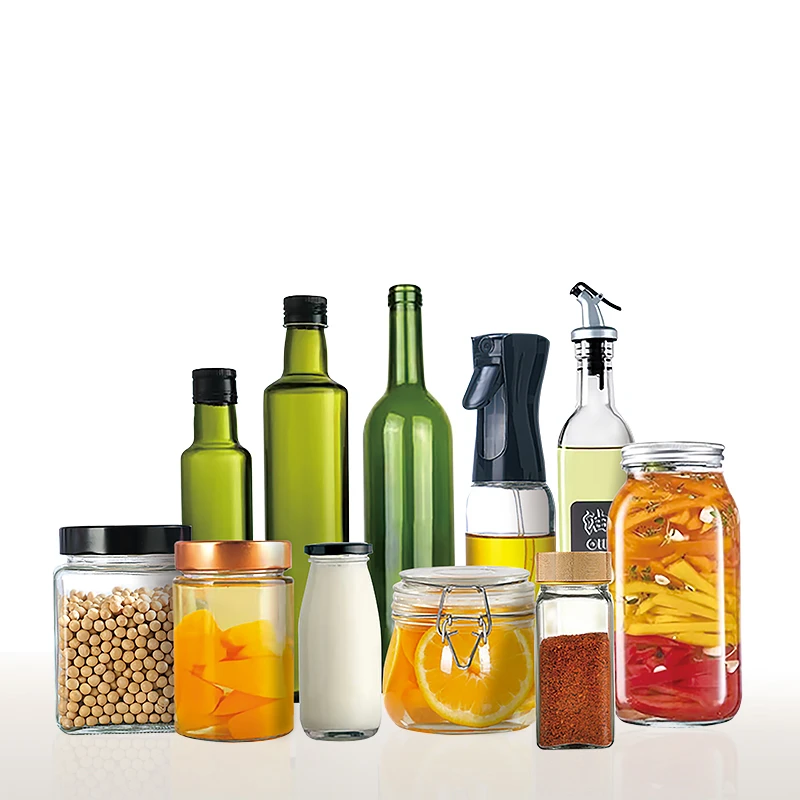Glass vs Plastic Beverage Bottles: Which Is Better for Your Brand?
As a beverage manufacturer, one of the most important packaging decisions you will make is choosing between glass and plastic bottles. Both materials have their advantages and drawbacks, and the choice can influence not only your production cost but also your brand image, consumer perception, sustainability goals, and market positioning.
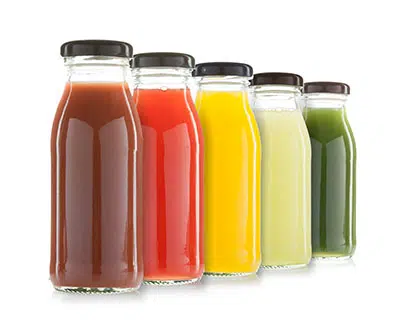
Glass Beverage Bottles
Glass, an ancient packaging material, offers purity, non-reactivity, and premium appeal. It is widely used for alcoholic beverages, premium juices, and sparkling waters.
| Pros | Cons |
| 100% recyclable without loss of quality | More fragile and prone to breakage |
| Does not leach chemicals into beverages | Higher manufacturing and handling costs |
| Maintains beverage flavor and purity | Less convenient for on-the-go use |
| Reusable and more eco-friendly | |
| Suitable for premium and alcoholic beverages |
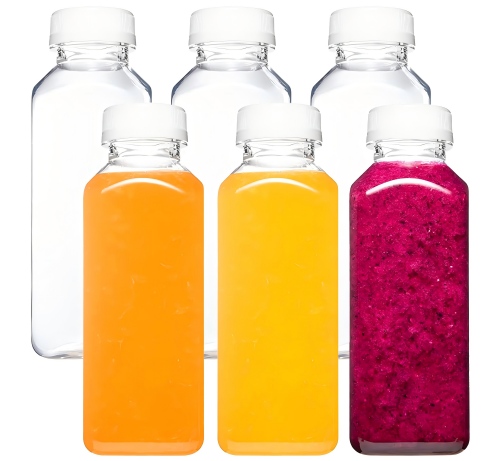
Plastic Beverage Bottles
Plastic beverage bottles, especially PET (polyethylene terephthalate), are dominant in the beverage industry due to their lightweight, low cost, and flexibility in design. They are popular in bottled water, carbonated drinks, sports beverages, and on-the-go packaging.
| Pros | Cons |
| Portable, lightweight, transport-friendly | Plastic waste environmental concerns |
| Cheaper to produce than glass | Heat causes chemical leaching |
| Highly durable and shatter-resistant | Less premium look and feel than glass |
| Convenient for consumers (resealable, portable) | Can affect taste over long storage times |
Cost and Manufacturing Efficiency
| Factor | Glass Bottles | Plastic Bottles |
| Material Cost | Higher raw material and energy input | Lower production and material cost |
| Manufacturing Speed | Slower production cycles | Faster production, injection and blow molding |
| Transportation | Heavy weight increases shipping cost | Lightweight, reduces logistics cost |
| Initial Investment | Higher mold and furnace setup | Lower mold cost, scalable production |
Key Insight: Plastic offers a clear cost advantage in both manufacturing and distribution. Glass, while more expensive, is often used when premium brand positioning justifies the added cost.
Weight and Portability
- Glass bottles: Much heavier; ideal for stationary consumption such as restaurants and bars.
- Plastic bottles: Light and convenient; suited for on-the-go lifestyles, sports, and travel.
| Average Weight of a 500ml Bottle | Glass | Plastic (PET) |
| Approx. weight | 250–300 g | 20–30 g |
Key Insight: If your target market values portability and convenience, plastic wins. For luxury or in-house consumption, glass remains preferable.
Safety and Durability
- Glass: Fragile, prone to breakage, but chemically inert (no leaching).
- Plastic: Shatterproof, safe for transportation, but risk of chemical migration under heat.
Brand Perspective: If your consumers demand safety during shipping and outdoor activities, plastic performs better. If they value purity of taste without chemical concerns, glass leads.
Consumer Perception and Brand Value
| Attribute | Glass Bottles | Plastic Bottles |
| Brand Image | Premium, elegant, sustainable | Affordable, practical, modern |
| Taste Perception | “Pure” and “better tasting” | May be perceived as inferior |
| Target Market | High-end consumers, wine, juice, craft sodas | Mass consumers, water, sports drinks |
| Marketing Advantage | Signals quality and tradition | Communicates convenience and accessibility |
Key Insight: Glass enhances luxury and authenticity, while plastic reinforces accessibility and affordability.
Sustainability and Recycling
Glass
- 100% recyclable without quality loss.
- Higher carbon footprint in production due to energy-intensive furnaces.
- Heavy weight increases CO₂ in transportation.
Plastic (PET)
- Widely recyclable but may degrade in quality.
- Lightweight reduces shipping emissions.
- Concerns about microplastics and ocean pollution.
| Sustainability Factor | Glass | Plastic |
| Recyclability | Infinite, no degradation | Limited, downcycling common |
| Carbon Footprint (Production) | High | Lower |
| Transportation Emissions | High (heavy) | Low (light) |
| Consumer Preference | Positive for eco-image | Increasing scrutiny on plastic waste |
Key Insight: Glass is ideal for brands promoting sustainability and eco-friendliness, while plastic suits mass-market brands optimizing efficiency but must address recycling responsibly.
Shelf Life and Product Protection
- Glass: Offers an excellent barrier against oxygen, moisture, and CO₂, preserving carbonation and flavor.
- Plastic: PET provides good protection but may allow slight permeability, reducing shelf life for carbonated or premium beverages.
| Shelf Life (Carbonated Drinks) | Glass | Plastic |
| Average Duration | 12–24 months | 3–9 months |
Key Insight: For products requiring long shelf stability (like beer, wine, or premium sodas), glass is the superior choice.
Customization and Design Flexibility
- Glass: Can be embossed, frosted, or colored for unique brand identity. However, changes require high cost and energy.
- Plastic: Extremely flexible in shapes, sizes, and closures. Suitable for innovative ergonomic designs and lightweight branding.
Brand Strategy: If distinctive design differentiation is critical, plastic offers faster innovation. For luxury branding, glass embossing and premium closures provide prestige.
Market Trends
Glass comeback: Driven by eco-conscious consumers and premiumization of beverages. Craft beer, kombucha, and cold brew coffee brands often choose glass.
Plastic dominance: Bottled water, sports drinks, and carbonated soft drinks still rely heavily on plastic for affordability and convenience.
Emerging Innovations:
- Lightweight glass bottles to reduce transportation costs.
- Plant-based bioplastics (PLA, PEF) to replace traditional PET.
- Hybrid packaging: PET bottles with glass-like appearance.
Decision Framework for Manufacturers
Here’s a quick decision table to help manufacturers choose:
| Brand Focus | Best Material | Why |
| Premium beverages (wine, craft beer, specialty juices) | Glass | Enhances luxury, taste integrity, sustainability image |
| Mass consumption (water, sports drinks, soft drinks) | Plastic | Lower cost, lightweight, consumer convenience |
| Eco-friendly positioning | Glass | Infinite recyclability, eco-brand storytelling |
| Portability & safety | Plastic | Shatterproof, travel-friendly |
| Long shelf life needed | Glass | Superior barrier properties |
Final Recommendations
As a manufacturer, the choice between glass and plastic beverage bottles should not be viewed as a one-size-fits-all decision. Instead, it must align with your brand strategy, target market, cost structure, and sustainability goals:
- Choose glass if you want to position your brand as premium, eco-conscious, and taste-focused.
- Choose plastic if your brand emphasizes convenience, affordability, portability, and mass reach.
Some successful beverage companies even adopt a dual strategy: offering premium beverages in glass and mass-market products in plastic to maximize market share.
Conclusion
Both glass and plastic bottles have distinct advantages, and the best choice depends on what your brand stands for and how you want your consumers to experience your product.
- Glass conveys heritage, authenticity, and quality.
- Plastic delivers convenience, affordability, and modern practicality.
Choosing the right packaging means more than function—it shapes your customer message.

